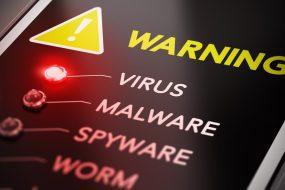
Secure authentication is essential for organizations transitioning to cloud-based applications and services. Digital certificates effectively authenticate users and encrypt sensitive information, but managing these certificates can be time-consuming and resource-intensive. Fortunately, certificate automation technology solves this challenge by helping organizations implement secure authentication with digital certificates quickly and efficiently while reducing costs. Learn how certificate automation can save you time and resources.
Understand Internal and External Authentication Processes
Cybersecurity is essential to protect sensitive information and prevent unauthorized access. One way to achieve this is through authentication processes, both internal and external. Internal authentication refers to verifying the identity of users within an organization, while external authentication verifies the identity of users outside the organization. Many businesses are now automating the certification process to ensure higher security.
Certificate automation makes managing certificates more efficient, eliminating the need for manual intervention and reducing the risk of human error. By understanding the importance of both internal and external authentication processes and implementing certificate automation, businesses can strengthen their cybersecurity and protect themselves from potential threats.
Design a Secure Authentication System
Digital certificates or public key certificates play a key role in authenticating the identity of users and ensuring secure communication between systems over a network. This process involves verifying the authenticity of the digital certificate and matching it with the user’s private key. Organizations can prevent unauthorized access to sensitive information and protect their valuable assets from cyber-attacks by utilizing a secure authentication system with digital certificates.
The challenge lies in implementing a robust system that can withstand attacks and provide a seamless user experience. However, with proper planning and careful implementation, organizations can create a secure and efficient authentication system that provides peace of mind to both users and administrators.
Utilize Appropriate Access Control Protocols
Protecting sensitive information is of utmost importance in today’s digital age. Utilizing appropriate access control protocols is critical in safeguarding data against unauthorized access. One such protocol that is gaining popularity is certificate automation. This protocol involves using digital certificates to verify the identity of authorized users and devices before granting access to protected resources.
By implementing certificate automation, organizations can efficiently manage access to data while minimizing the risk of data breaches. With the increasing prevalence of cyber threats, it is essential to take every precaution to protect against unauthorized access, and certificate automation is one way to help achieve that goal
.
Implement Strong User Credentials for Authentication
The security of user information has become a top priority for many organizations. With the increasing amount of cyber-attacks and data breaches, implementing strong user credentials for authentication has never been more crucial. Secure passwords and multi-factor authentication have become essential to protect user accounts from unauthorized access.
Implementing these measures may seem challenging initially, but they are worth the effort in the long run. By enforcing strong user credentials, you provide an additional layer of security that can give your organization and users peace of mind.
Set up Encryption Protocols to Protect Sensitive Data
Shielding sensitive data from malicious attacks is of utmost importance for organizations worldwide. The first line of defense is implementing robust encryption protocols that keep intruders at bay. While encryption is crucial in securing data, certificate automation is equally essential. Automated certificate management can streamline the process of generating, distributing, and renewing SSL/TLS certificates. It also ensures that certificates are updated, preventing unauthorized access to sensitive data.
With certificate automation, organizations can set up reliable encryption protocols and safeguard against cyber threats effectively. The stakes are too high to ignore the need for a proactive approach to security, so organizations must take advantage of automated certificates to keep data confidential.
Monitor and Audit Authentication Activities Regularly
Ensuring the security of a company’s information systems is no easy feat. But one crucial aspect that must not be overlooked is monitoring and auditing authentication activities regularly. Doing so lets you track who is accessing your system, where they are accessing it, and at what time. This will enable you to detect suspicious activity and potential security breaches, allowing for swift action.
Regular monitoring and auditing will also help to identify any weaknesses in the authentication system so that they can be addressed promptly. Protect your company’s sensitive information by prioritizing authentication activity monitoring and auditing.
Final Thoughts
Security is paramount when it comes to authentication processes and protocols. We must ensure that all of our systems can accurately and securely allow access to the right users while preventing malicious actors from accessing our data. To ensure online security and peace of mind for ourselves and our customers, we must never be complacent about securing our networks – only then will we be able to create a truly safe environment. The more informed we are on the steps that we can take to protect our data, the better off everyone involved will be in avoiding any digital disasters that may arise due to poor authentication practices.







